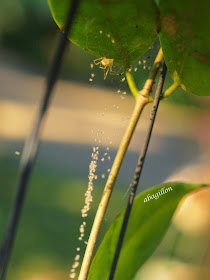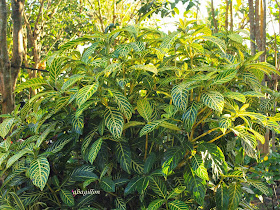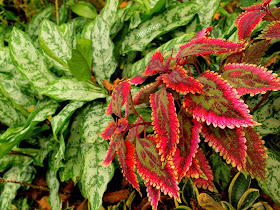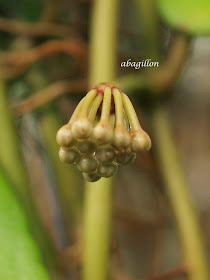Suddenly, a string of white dusts seem to appear moving down along the webs down to another hoya leaf. When i scrutinized it and observed closely, they are very very small spider hatchlings. They suddenly travelled along the webs for fear of their lives. I observed closer, and they are so cute baby spiders!
They are queueing through the provided way of scape, the spider threads. I guess the spiderlings went down on its own because of the insipient danger, my intrusion, or probably the mother instructed them to run for their lives.
The mother did not leave its position in the mass of webs supposedly its house under the leaf, clutching the egg mass with its very long legs.
I've photographed the mother several times, and it didn't try to leave the nest at all, guarding that mass i suppose is still an egg mass. I wonder why many hatchlings are already out, but still the mother guards this egg shell with its life! If not for the egg mass, it would have suddenly escaped with my constant movement and flipping of the leaf to take its photo. The head is almost transparent, as well as the legs. But the abdomen is horizontally lined and has black thorns. The full length of the mother's body is only about 5 mm, yes that short. The egg mass obviously is bigger than the mother. I don't even know yet what this spider is called, and i will study its habits later. I love being informed of the so many interesting residents in my garden world.































